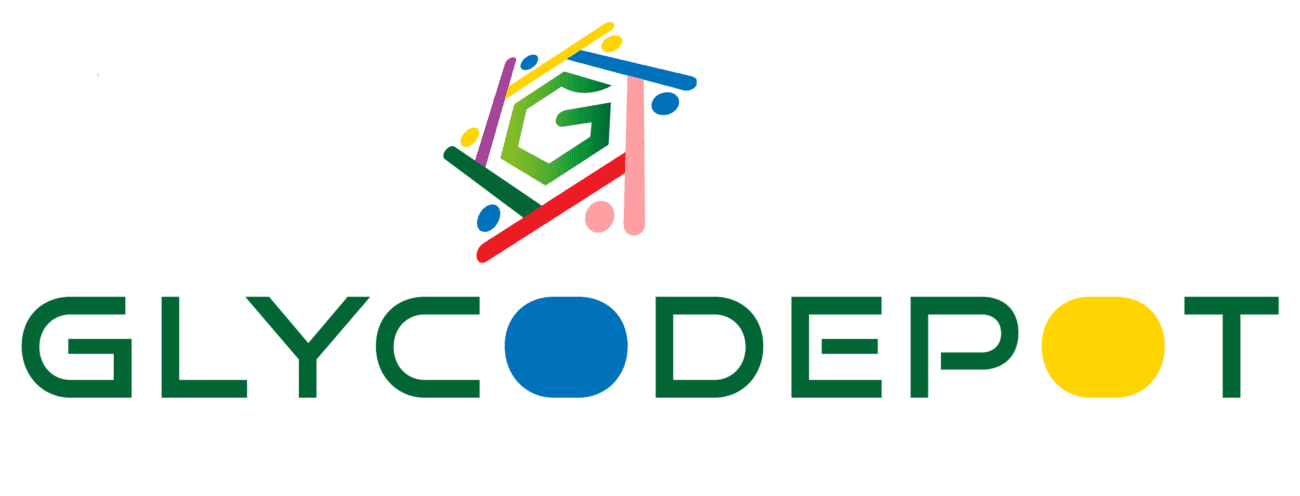dTDP-Fuc3N (dTDP-3-amino-3,6-dideoxy-L-fucose) is a nucleotide sugar derivative involved in bacterial glycosylation pathways, similar to other dTDP sugars like dTDP-Qui3N. It plays a crucial role in the biosynthesis of unique glycans and glycoconjugates in various bacteria.
Structure & Properties:
- Molecular Weight (MW): Approximately 547 g/mol (depending on the specific form and substitutions)
- Chemical Formula: C16H26N3O13P2
- Synonyms: dTDP-3-amino-3,6-dideoxy-L-fucose, dTDP-Fuc3N
- Functional Groups: This sugar nucleotide is characterized by an amino group (-NH2) at the 3-position and the absence of hydroxyl groups (-OH) at the 3 and 6 positions on the L-fucose ring.
Biological Role:
- Biosynthesis Pathway: dTDP-Fuc3N is synthesized from dTDP-L-fucose through enzymatic reactions that modify the fucose sugar, including amination at the 3-position and the removal of the hydroxyl group at the 6-position.
- Function: dTDP-Fuc3N serves as a substrate in glycosylation reactions, where it contributes to the biosynthesis of bacterial surface polysaccharides, lipopolysaccharides (LPS), and other glycoconjugates.
Applications:
- Bacterial Glycobiology: dTDP-Fuc3N is critical in the construction of bacterial glycans that are part of cell surface structures, influencing bacterial virulence and interaction with host cells.
- Research on Pathogenic Bacteria: It is used in studies focusing on the assembly of unique bacterial polysaccharides, particularly in pathogens, where these glycans contribute to immune evasion and survival.
Significance in Research:
- Pathogen Glycan Diversity: dTDP-Fuc3N is incorporated into glycan structures that help pathogens evade host immune systems by altering their surface antigens.
- Vaccine Development: Understanding the role of dTDP-Fuc3N in bacterial polysaccharide biosynthesis can inform vaccine strategies by targeting these molecules to prevent infections.
Key Roles:
- Lipopolysaccharide (LPS) Biosynthesis: dTDP-Fuc3N contributes to the formation of LPS in Gram-negative bacteria, a crucial component of the bacterial outer membrane.
- Capsular Polysaccharides: This sugar nucleotide is also involved in the formation of capsular polysaccharides, which provide protective layers for bacteria against environmental threats and immune responses.
Storage and Stability:
- Storage: dTDP-Fuc3N should be stored at -20°C in a dry, moisture-free environment to preserve its stability.
- Stability: The molecule is stable under proper storage conditions but may degrade if exposed to heat or moisture.
Research Applications:
- Antibiotic Research: The enzymes that synthesize or use dTDP-Fuc3N in glycosylation pathways are potential targets for antibiotics aimed at inhibiting bacterial growth.
- Bacterial Glycoconjugates: Studying dTDP-Fuc3N provides insights into bacterial cell wall structures, particularly in understanding how pathogens protect themselves from host defenses.
Potential Impact:
- Antibiotic Development: Inhibiting dTDP-Fuc3N biosynthesis or its incorporation into glycoconjugates could weaken bacterial defenses, making them more susceptible to antibiotics or immune system attacks.
- Glycan Engineering: dTDP-Fuc3N can be used in synthetic biology and glycobiology to engineer modified glycan structures for various research and therapeutic applications.
Key Research Areas:
- Bacterial Virulence Factors: dTDP-Fuc3N is involved in the synthesis of glycan structures that contribute to bacterial virulence and pathogenicity, making it a target for studies on bacterial-host interactions.
- Structural Biology: Investigating the enzymes responsible for dTDP-Fuc3N biosynthesis can lead to the discovery of new therapeutic targets for bacterial infections.
dTDP-Fuc3N plays an important role in bacterial polysaccharide and glycan biosynthesis, contributing to the virulence, immune evasion, and survival of various pathogens. Its significance in glycosylation pathways makes it a key focus in the fields of bacterial pathogenesis, vaccine development, and antibiotic research.

Reviews
There are no reviews yet.